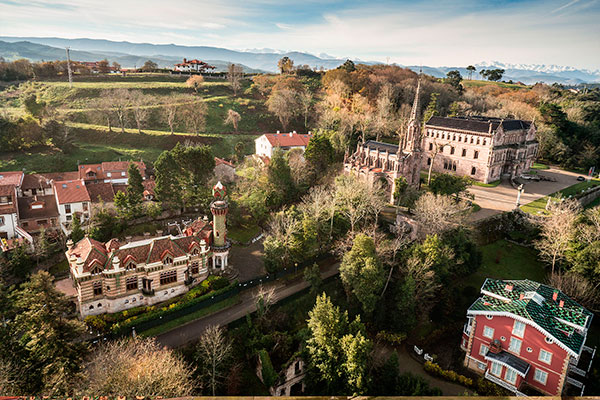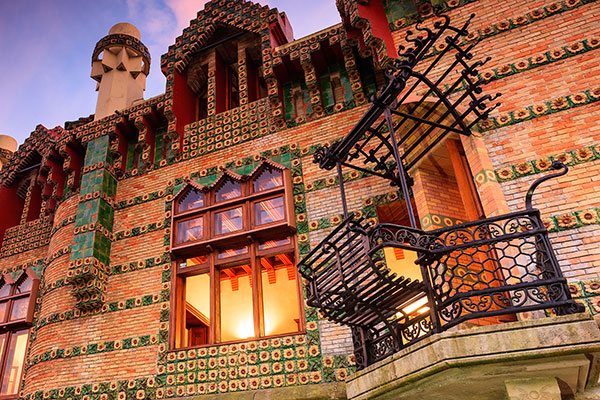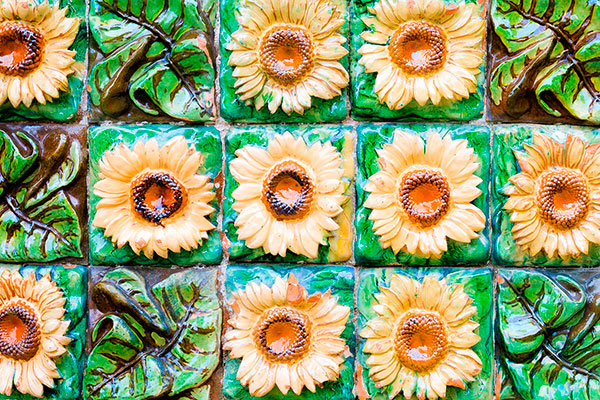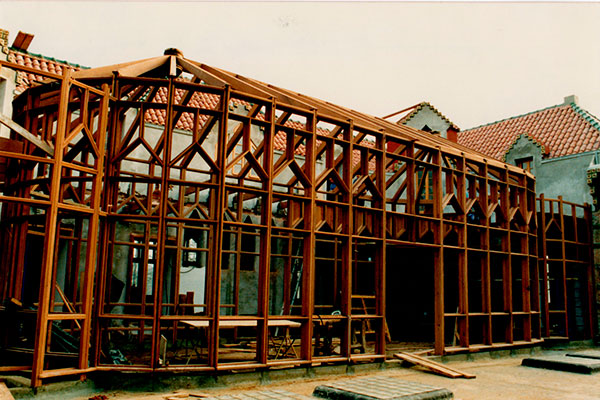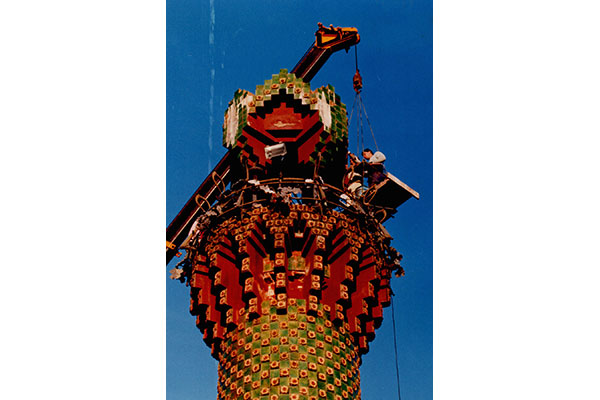City Icons: Amsterdam - Almost sold out!
Festive City Icons Kick Off with Talk by Linda Vlassenrood
MORE MIES - Pure Architecture in Haus Lange Haus Esters
An Elementalist and Mediterranean Architecture
Through a Bauhaus Lens: Edith Tudor-Hart and Isokon
Modernism Week Lecture: 10 Years of Iconic Houses
Aluminaire House Grand Opening
Exhibition Icons of the Czech Avant-Garde
Icon for Sale - Loos Villa: Haus Horner
SPECIAL – Iconic Dreams Europe - Sleep in an Iconic House!
SPECIAL – Iconic Dreams North America - Sleep in an Iconic House!
SPECIAL – German Greats!
SPECIAL - Vacances en France!
SPECIAL - Casas Icónicas en España!
SPECIAL – Dutch Delights!
SPECIAL – Iconic Artist Residencies
SPECIAL – Northern (High)Lights!
SPECIAL – Iconic Housing
SPECIAL – Women & Iconic Houses
Winy Wants a World Wonder
Welcome Atelier Volten!
Public Screenings and Private Streaming of Pioneers of the Dutch Modern House
Sleep in a Modernist Gem – Huis Billiet in Bruges
Iconic Houses in The Netherlands - 100 Years Van Zessen House
Exclusive Tour and Film Screening Package
The Last House Designed by Adolf Loos Will Be Built in Prague
Icons of the Czech Avantgarde
Icon for Sale - Casa Legorreta
Rietveld Day: 200 Enthusiasts Explored 3 Utrecht Icons
Hurray! 10 Years Iconic Houses
7th International Iconic Houses Conference A Huge Success
Meet Conference Co-Chair Iveta Černá
Meet Conference Co-Chair Maria Szadkowska
Eighteen Iconic Houses Under One Roof
17 June - 'Pioneers-film' Screening Amersfoort
Iconic Houses in The Netherlands - Van Eesteren House Museum
Welcome Margarete Schütte-Lihotzky Zentrum in Vienna!
Welcome Vila Volman! Jewel of Czech Functionalism
Movie Night: Adolf Loos- Revolutionary Among Architects
'Inside Iconic Houses' Case Study House #26 Webcast in Webshop
Inside Iconic Houses at Taut’s Home in Berlin
Rediscovering Forgotten Loos Interiors in Pilsen
'Inside Iconic Houses' - Online Tour Program
Iconic Houses in The Netherlands - The Diagoon House
Iconic Houses in The Netherlands - Rietveld Schröder House
Rietveld Houses Owners Association
Corberó Space: New Life for Hidden Jewel
Iconic Houses in The Netherlands - Pierre Cuypers' House and Workshops
Reeuwijk Celebrates Completion of Restoration Rietveld Homes!
Iconic Houses in The Netherlands - Van Doesburg Rinsema House
Welcome Rietveld's Van Daalen House!
Architect Harry Gessner Passed Away at 97
Watch Pioneers of the Dutch Modern House Now On Demand
Icon Saved: Dorchester Drive House
Welcome Umbrella House!
Iconic Houses in the Netherlands – Berlage’s Masterpiece
Iconic Houses in The Netherlands - Het Schip
Inside Iconic Houses - Tour of Maison Cazenave
Inside Iconic Houses Tours Vizcaya Museum & Gardens in Miami
Casa Masó Celebrates 10 Year Anniversary
Inside Iconic Houses tours Roland Reisley's Usonian Frank Lloyd Wright House
Rietveld’s Experimental Housing in Reeuwijk Saved
Serralves Villa after restoration
Portraits of the Architect - Interview with Gennaro Postiglione
Test Labs for New Ideas - Interview with Natascha Drabbe
Inside Iconic Houses - Isokon Building
Inside Iconic Houses - 16 December: Sunnylands with Janice Lyle
BCN-BXL Coderch-De Koninck - Beyond Time
New Chairman Architect Nanne de Ru on The Perfect Platform
Health and Home - Interview with Beatriz Colomina
A Life Less Ordinary – Interview with Valentijn Carbo
Invisible Women - Interview with Alice T. Friedman
Winy Maas on the Green Dip
Anita Blom on Experimental Housing of the 1970s
Women’s Worlds - Interview with Natalie Dubois
The Culture of Living - Interview with Robert von der Nahmer
Hetty Berens: A Fresh Take on Modernism
Niek Smit on Supporting Modern Heritage
Alice Roegholt on Amsterdam’s Working-Class Palaces
July is Iconic Houses Month
Hans van Heeswijk on The Pioneers of the Dutch Modern House
Wessel de Jonge on Dutch Icons at Risk
Save Maison Zilveli - Sign the Petition!
How a Building Tells a Story - Recorded Event
Toolkit for Owners of a Modern House
13 Aalto Sites Nominated for UNESCO World Heritage
Villa Beer At Risk - Sign the Petition!
Business Cards of Stone, Timber and Concrete in the Brussels Region 1830-1970
Exhibiting & Visiting Modernist Monuments
Fostering Well-Researched Responsible Design
ICONS AT RISK
Enjoy a virtual visit to the California House and a Q&A with architect Peter Gluck
Exhibition 'Modernism and Refuge'
A Hidden Gem of Postmodernism
New Centre for Historic Houses of India
An Online Chronicle of the Douglas House
Villa Henny, geometric style icon in The Netherlands
A Mendini temple in Amsterdam
IH-lectures USA & Canada Feb 2020 on Melnikov House
Sponsors and Friends
An Afternoon with the Glucks
Chandler McCoy on Making Modern Houses Sustainable
Catherine Croft: Getting Away from the Demolition Mentality in the UK
Patrick Weber on Discovering an Unknown Icon
Fiona Fisher on Iconic Interiors
Jocelyn Bouraly on Villa Cavrois
Mireia Massagué on finding success through a new kind of partnership
Danish Moderns – Looking Back at Our Mini-Seminar
Venturo house complements Exhibition Centre WeeGee’s offering
Lecture report: Remembering Richard Neutra
Hôtel Mezzara and the Guimard Museum project
We welcome 13 new members!
BREAKING NEWS: 8 Wright Sites Inscribed on Unesco World Heritage List!
LECTURE 29 August - Raymond Neutra: My Father and Frank Lloyd Wright
Iconic Reads
Our Badge of Honour
Iconic Houses End Year Message
City-ordered rebuild of landmark house stirs debate: Appropriate or overreach?
Kohlberg House Restoration in Progress
Planned Demolition of Rietveld Homes in Reeuwijk
Renovation Gili House in Crisis
An Iconic Saga
Restoring Eileen Gray’s Villa E-1027 and Clarifying the Controversies
Modernism on the East Coast
Iconic Houses in Latin America
Conference testimonials
House Tours May 2018
Expert Meetings
Natascha Drabbe - Iconic Houses: The Next Chapter
Terence Riley -KEYNOTE SPEAKER- on Philip Johnson
New era for Villa E-1027 and Cap Moderne
Hilary Lewis on Philip Johnson and his Glass House
John Arbuckle on Great House Tours
William D. Earls on the Harvard Five in New Canaan
Stover Jenkins on Working for Philip Johnson
Frederick Noyes on his Father’s House
Scott Fellows and Craig Bassam on their Passion for Preservation
Jorge Liernur -KEYNOTE SPEAKER- on Latin American Modernism(s)
Fabio Grementieri on Modernism in Argentina
Catalina Corcuera Cabezut on Casa Luis Barragán
Renato Anelli on Lina Bo Bardi’s Casa de Vidro
Tim McClimon on Corporate Preservation
Amanda Nelson on Building Donor Relationships
John Bacon on Planned Giving
Jean-Paul Warmoes on the Art of Fundraising in America
Chandler McCoy on Why Less is More
Katherine Malone-France on Moving with the Times
Anne Mette Rahbæk on Philanthropic Investments and Preservation
Peter McMahon on Saving Modern Houses on Cape Cod
Toshiko Kinoshita on Japanese Modern Heritage Houses
Roland Reisley on Life in a Frank Lloyd Wright House
5th Iconic Houses Conference May 2018
Kristin Stone, Pasadena Tour Company
Restoring the past: The Diego Rivera and Frida Kahlo Home Studio
Behind the Scenes: Hendrick de Keyser Association
Crosby Doe, Architecture for Sale
Latin America Special – Focus on Mexico
De Stijl in Drachten
Preserving the Nancarrow House-Studio
Meet the Friends - Nanne de Ru
Latin America Special – Focus on Brazil
Jan de Jong’s House is Latest Hendrick de Keyser Acquisition
Stay in a Belgian Modernist Masterpiece
In Berlin’s Modernist Network
Rietveld-Schröder House Celebrates De Stijl Anniversary
Meet Our New Foundation Board Members
Maintaining Aalto's Studio – Linoleum Conservation
Virtual Tour of a Papaverhof Home in 3D
Getty Grant for Villa E-1027
Plečnik House in Ljubljana
Iconic Dacha
Iconic Houses: A Bohemian Road Trip
Work in Progress: Capricho de Gaudí
11 Le Corbusier Homes now on Unesco World Heritage List
At home with Le Corbusier
Henry van de Velde’s Study in Haus Hohe Pappeln Restored
Lynda Waggoner reports
A Conference to Remember
4th International Iconic Houses Conference
Guest of Honor - Harry Gesner
Fallingwater: European Lecture Tour
Wright Plus 2016 Walk
Susan Macdonald, Getty Conservation Institute
John Mcllwee, Garcia House
Meet the Friends – Elisabeth Tostrup
Iconic Houses: The Story So Far
Willie van Burgsteden, designer Iconic Houses
Buff Kavelman, Philanthropic Advisor
Meet the Friends - Frederick Noyes
Sheridan Burke, GML Heritage
Meet the Friends - Raymond Neutra
Sidney Williams, Frey House
Franklin Vagnone and Deborah Ryan, Museum Anarchists
Meet the Friends - James Haefner
Toshiko Mori, architect
Malachi Connolly, Cape Cod Modern House Trust
Meet the Friends - Penny Sparke
Lucia Dewey Atwood, Eames House
Cory Buckner, Mutual Housing Site Office
Jeffrey Herr, Hollyhock House
Speaking Volumes: Building the Iconic Houses Library
Sarah Lorenzen, Neutra VDL Studio and Residences
Ted Bosley, Gamble House
Keeping It Modern - Getty Conservation Grants
Meet the Friends - Thomas Schönauer
Wim de Wit, Stanford University
Linda Dishman, Los Angeles Conservancy
Jesse Lattig, Pasadena Heritage
Join us in Los Angeles! Update
Work in Progress: Casa Vicens
Work in Progress: Van Wassenhove House
Work in Progress: Villa Cavrois
Work in Progress: The Pearlroth House
Conference calls!
Follow us!
Third Iconic Houses Conference a huge success
Conference House Tours Barcelona
Marta Lacambra, Fundació Catalunya-La Pedrera
Natascha Drabbe, Iconic Houses Foundation
Special speaker Oscar Tusquets
Jordi Tresserras, UNESCO Network ‘Culture, tourism and development’
Christen Obel, Utzon Foundation
Elena Ruiz Sastre, Casa Broner
Fernando Alvarez Prozorovich, La Ricarda
Tim Benton, Professor of Art History (Emeritus)
Susana Landrove, Docomomo Spain
Rossend Casanova, Casa Bloc
Conference Program 25 November 2014
Jordi Falgàs, Casa Rafael Masó
Documentary La Ricarda
Marga Viza, Casa Míla/La Pedrera
Celeste Adams, Frank Lloyd Wright Trust
Conference 25 November 2014 at La Pedrera
Henry Urbach, The Glass House
Victoria & Albert Museum London November 12
Tommi Lindh, new director of the Alvar Aalto Foundation and Museum
Iveta Černá, Villa Tugendhat
Lynda Waggoner, Fallingwater
Kimberli Meyer, MAK Center
Rent a house designed by Gerrit Rietveld
Barragán House on Screen
Gesamtkunstwerk – An Icon on the Move
Triennale der Moderne 27 September - 13 October 2013
Prestigious Art Nouveau mansions in Brussels open
September 14 + 15: Heritage Days in Paris
June's New Arrivals: Museum Apartments
Iconic Houses is now on Twitter and Facebook
Corbu’s Cabanon: Reconstruction and Lecture
Projekt Mies In Krefeld: Life-sized model of the Krefeld Clubhouse
New arrivals: Spain special
MAMO: Le Corbu’s ‘Park in the Sky’ open 12 June
Taut's Home wins Europa Nostra Award
Annual Wright Architectural Housewalk: 18 May
Frank Lloyd Wright Homes on Screen
Message from the Editor
Neutra’s House on Screen
Michel Richard, Fondation Le Corbusier
Symposium The Public and the Modern House
Melnikov House on Screen
Iconic Houses in the media
Message from the Editor
Round Table Review
Eileen Gray House on Screen
Copy Culture
At Home in the 20th Century
New 20th century Iconic Houses website launches
Philippe Bélaval, Centre des monuments nationaux
Work in Progress: Capricho de Gaudí
The Capricho (1883-1885) represents the starting point for Catalan architect Antoni Gaudí (1852-1926). This early work is full of passion and originality and includes all the ingredients for which Gaudí is world-famous. One of the few buildings designed by Gaudí outside Catalonia, the Capricho is in the Modernist town of Comillas on the Northern Spanish coastline. Throughout the Capricho’s interior, exterior and gardens, are colourful and creative design elements inspired by nature and full of symbolism. Many of the materials, styles and concepts developed here were later used at Barcelona’s Park Güell, La Pedrera, Casa Batlló and the Sagrada Família.

Carlos Mirapeix, Managing Director of the Capricho de Gaudí, gives us a look behind the scenes.
Who is the owner of the Capricho de Gaudí?
The Capricho is privately owned by a company called El Capricho de Gaudí S.A. in Comillas. All activity is financed directly by visitor admission fees. The Capricho doesn’t receive any public assistance or financial aid.
Tell us about the major changes to the structure since it was completed
The Capricho closely resembles what Gaudí designed in 1883 but as with any building of its age – it has witnessed changes. The most aggressive was the first renovation in 1914 when the original conservatory and the Arabic tiles were removed. The second renovation in 1988 saw the re-introduction of the conservatory and the tiles also. But some smaller mistakes were made that we are trying to rectify today.
What is your role? Who are the other key members of the team?
Together with the Head of Maintenance, Jesús Pérez, I am responsible for the conservation of the building on a day to day basis. The owner and CEO, Taketo Kurosawa, is also actively involved and we have a network of collaborators and external assessors that assist with sensitive or specialised aspects of the conservation.
What is the biggest conservation challenge for the Capricho?
Our biggest challenge is the damp. Designed by a Mediterranean architect but located in a more Northerly climate, humidity has always been the building’s main enemy. The deterioration of the exterior ceramics, due to the wind and proximity to the sea, is another constant source of concern.
Have you or are you developing a conservation management plan?
Our Annual Plan covers everything from visitor experience to conservation. We schedule most projects from November to January but there are often emergencies that aren’t captured in any document.
What are your restoration objectives?
In the short term, we want to restore the lower ground floor where the kitchens and servants’ quarters were located. And we’d like to reinstate the hydraulic tile flooring as it was originally. Both of those projects will really contribute to the overall visitor experience. In the long term, replacing the conservatory and preserving the tower are our priorities.
How well documented is the Capricho? Can you refer to old photos and sketches?
Unfortunately, the original drawings and plans were burned in a fire in Gaudí’s studio inside the Sagrada Família, so our conservation work is based on the few old photos we have and what we can decipher from the building itself.
Is funding available from state, regional or EU sources for any elements of the building’s conservation?
We describe ourselves as independent and sustainable because the work we carry out is financed by visitors’ fees. Thankfully the building is currently in a very good state of repair. We’d never rule out asking for assistance if the architectural integrity of the building were to become compromised.
The Capricho is open to the public practically every day of the year – when can you carry out conservation work?
We close the building for a week every Winter – it’s absolutely frenetic because there’s so much we need to get done!
Has your vision for the museum changed or evolved since it opened its doors to the public in 2010?
Everything has changed. When we opened, the financial picture was bleak and our focus was very much on saving the building. Soon enough, we realised we had to focus on the visitor experience. Today, our aim is to provide the highest of standards in every aspect of the Capricho.
What are current visitor numbers? Do you foresee any growth?
In our first year we had 100,000 visitors. Numbers have continued to grow and today we receive 130,000 visitors. Rather than driving more demand, our objective is to maintain those numbers and continue to improve the visitor experience.
What is it like to work in a space designed by Gaudí?
Everything we do takes place inside the Capricho – our offices are here, our staff eat here, and we even meet our suppliers in a room designed by Gaudí. You can’t but feel a really special connection with the building. And it’s amazing that five years after opening, we are still making fresh discoveries about the house.
What about the design of El Capricho de Gaudí is of most value to you?
In addition to the recognisable Gaudí style, which we love, we really appreciate how advanced the design was for its time. As you get to know the Capricho better and better, that’s what really impresses!
What tips or advice would you pass on to somebody embarking on something similar?
Managing a space such as this is both inspiring and exhausting! Every day is different. We’ve learned that being self-financing, flexible with the running of the place and agile with decision-making is the best way forward. In fact, the term ‘eternal beta version’ probably sums up life at the Capricho perfectly.
Publication date 25 August 2016
